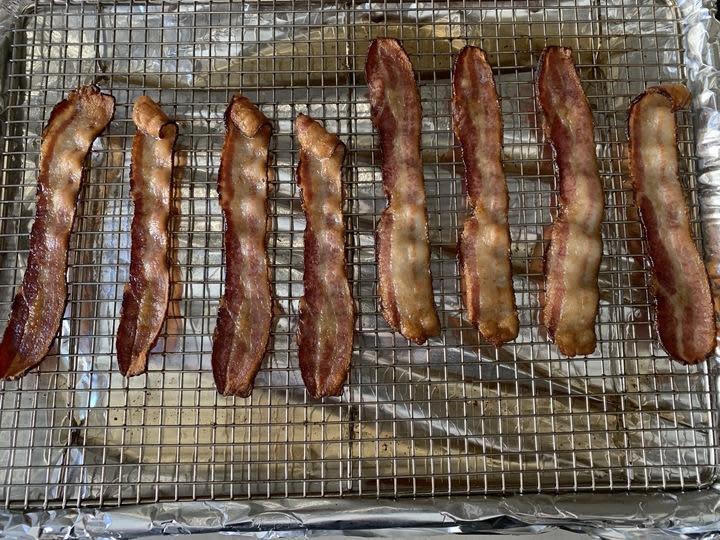How to Make Bacon in the Oven That’s Perfect Every Time
Bacon is one of those magical things that is as fantastic by itself as it is as an ingredient. Perfectly cooked strips of bacon are the star of breakfast or the foundation to a perfect BLT, but you can cut it into little slices or crumble it up to garnish a salad or mix into pasta or stir into baked goods. But cooking bacon can sometimes seem daunting.
The skillet can sputter and spatter grease all over you and your cooktop. The bacon curls up onto itself into unmanageable twists. You strive for the right amount of crisp, but fall short. It can all feel a little overwhelming. Especially if you need to make bacon for a crowd.
Never fear, because once you master this technique, bacon is going to be your new best pal. You just to move it off of the stove and into the oven. Cooking bacon in your oven means you are only limited in amount to the number of sheet pans you can fit in your model. It cooks on its own with limited interference, so you can attend to other things. And it yields bacon that stays flat and doesn’t curl up too much, which makes it perfect for sandwiches and burgers and other places where you want it to lay down and behave.
Making bacon in your oven could not be easier, if you follow these simple tips.
Get the recipe: Bacon-Wrapped Corn-on-the-Cob
Choose your bacon

People have their own preferences when it comes to bacon, some want it cut thin, some want it cut thick, some like uncured, some like it extra smoky. Think about the application when choosing bacon. If it is going to be a side, next to your eggs, or seasoned or candied, use a thicker cut. Ditto for a BLT where it is the star. If you are going to place it on a sandwich as a garnish, you might want it thinner. Making burgers? You might want to consider pancetta, an Italian unsmoked bacon that is round, so it fits perfectly on your buns.
Get the recipe: Bacon-Wrapped Grilled Dates With Brie
Preheat your oven
For most bacon, I like 400 degrees. This allows the fat to render and the meat to cook through fairly quickly and get a good crisp on it. If you are candying bacon or adding any sugar, try 350 for longer to help prevent the sugar from burning.
Get the recipe: Copycat Starbucks Bacon & Gruyère Egg Bites
Prep your pans

Take a rimmed sheet pan and line it with foil. This will help tremendously with cleanup. Place a rack into the lined pan and give it a spray with non-stick cooking spray. While it might seem a bit counterintuitive to add any fat to such a fatty product, don’t forget that there are the meaty parts as well and you do not want your bacon to stick to the rack. If you do not have a rack, you can do this right on the foil-lined pans, but you’ll need to really drain the cooked bacon well because it will be swimming in the grease.
Get the recipe: Clams With Pasta and Bacon
Arrange your bacon
You want your bacon to cook fast, so don’t crowd the pan. Be sure there is at least a half-inch of space between slices so that the hot air can flow properly all around the slices to cook them evenly, and so they don’t stick together.
Get the recipe: Pan-Seared Lake Trout With Bacon
Cook your bacon

Bacon will take anywhere from 12-25 minutes on 400, depending on thickness and your desired level of crispiness. I always start checking at 12 minutes and then check again in 2-minute increments. Bacon will crisp slightly as it cools, so I recommend removing it slightly before you think it is perfect. Remove from the rack to a paper towel-lined plate to soak up extra grease.
Get the recipe: Potato Salad Carbonara
Save the fat!

Bacon fat is the gift that keeps on giving, so don’t let it go to waste! Pour the rendered fat carefully from the pan into a clean jar and store in the fridge. You can use it to cook vegetables, make cornbread, or even roast potatoes.

